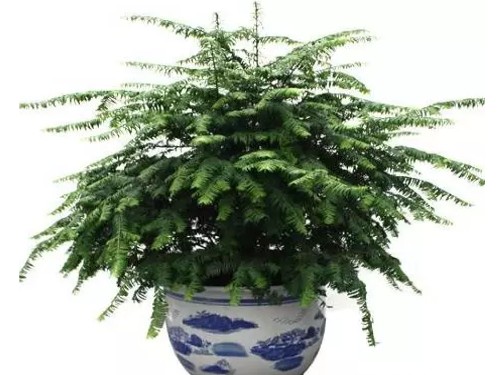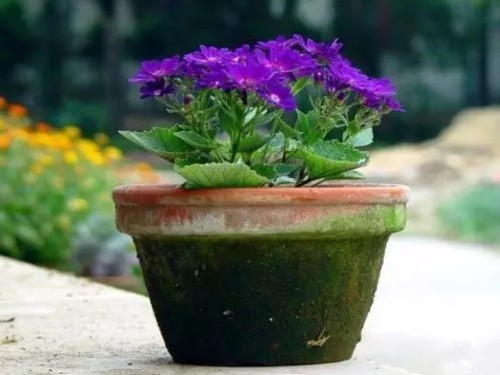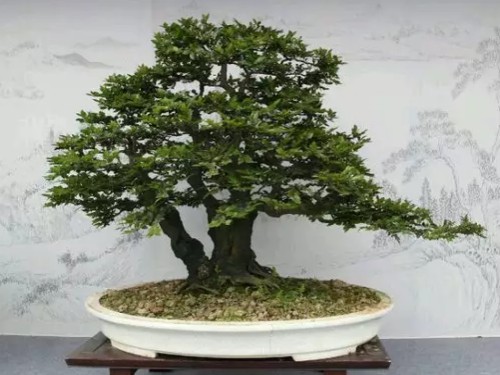How to raise yew bonsai
Taxus is an ancient tree species with a history of one hundred years. It has a long history of cultivation in China and is deeply loved by people. Taxus has very strong medicinal value, which can extract paclitaxel. It is internationally recognized as an anti-cancer and anti-cancer drug, and it is a national first-class protected tree species. It gets its name because the red bean of the yew has the same fruit as the red bean.
The roots of yew are relatively fine, and its roots are relatively shallow, so many family companies also use potted plants to grow yew. Because of its habit and strong adaptability, it is loved by many people. Taxus not only has ornamental value, but also has high medicinal value. Taxus has been recorded as medicine since ancient China, and it also has the effect of purifying family air. Since the yew is so good, how to raise the yew in the family?

1. Soil
Taxus should be planted in the middle and late February of early spring, and the seedlings should be dug up with soil balls, which can be planted in the shade of the garden and often planted with trees. The basin soil is made of loose, fertile acid soil with high organic content, which can be mixed with garden soil, peat and sand at 2:1:1, plus 1% rotten organic fertilizer.
2. Environment
The original growth environment of Taxus is more shade-tolerant, whether solitary or group. In China, it is generally distributed in mountainous areas, and the temperature is generally low, so the cold resistance and drought resistance are good. But I like a wet environment.
3. Sunshine
Taxus actually needs sunlight, but it is best to cultivate it in shade at the seedling stage. However, it usually grows as an adult plant after 3 years, and it needs all-day sunshine to feed. If there is no light, it will die, just like the rich tree and the treasure tree.
4. Watering
Taxus likes a humid environment, but it is not suitable for more watering, otherwise it will cause waterlogging. The standard of watering is that the soil is dry and then watered. Potted plants can be watered every 2-3 days in spring and once in the morning in summer. If the potted soil is still too dry, spray it again with a fine-hole spray pot in the evening, which not only flushes the leaves and increases the humidity of the ambient air, but also wets the remaining water on the basin again, which is good for plant absorption. Water every 3-4 days in autumn, if it rains continuously, you can also water it once a week, as long as the basin is moist. Watering less in winter, pot plants in the garden can be washed with clean water every 15 to 20 days, leaving the remaining water to moisten the basin soil.
5. Fertilization
Taxus does not need much fertilizer, just need to ensure that the soil is fertile, generally do not need fertilization, but proper fertilization can increase its growth, generally around March fertilization is good, thin fertilizer. Potted plants should apply rotten cake fertilizer and water, and apply alum fertilizer with a concentration of 1: 10: 15 per month during the growing season. Change the basin every other year and reinforce the rotten organic fertilizer at the bottom of the basin. From September to October in autumn, base fertilizer can be applied, 50 kilograms of mature animal manure per plant, and compound fertilizer containing nitrogen, phosphorus and potassium can be applied in early spring, 100 grams per plant, or 500 grams of superphosphate.
6. Pruning
Generally speaking, after a few years, the yew will grow taller, but some varieties will not grow tall as a result of pruning. But the tallest species of yew can grow to 30 meters. So varieties that can grow taller need to be transplanted to the soil.
Taxus likes a warm, humid and sunny environment, slightly resistant to semi-shade, spring, summer and autumn is its growing season, it can be maintained in a well-ventilated and sunny place outdoors, watering "do not dry, watering is thoroughly", and spray water to the plant when the air is dry, to make the leaf color fresh; apply mature thin liquid fertilizer every 20 days or so, in order to make the leaf color dark green, can be sprayed with foliar fertilizer such as Yemanbao.
Winter winter in shelter from the wind and sunny place to winter, in case of cold current can be moved to the indoor, can also winter in the cold room, control watering, keep the basin soil above 0 ℃ non-icing. The top advantage of the yew is strong, and when the plant grows to a certain height, the top can be cut off to control the plant height; the lateral branches should also be thinned to make them scattered, dense and in line with the modeling requirements, but the whorled branches should be selectively retained to highlight the characteristics of the varieties and maintain their unique features. Turn the basin every 1 to 2 years in spring, the basin soil should be loose, fertile, humus-rich neutral to slightly acidic soil.
Note:
The main results are as follows: (1) Taxus should be cultivated at the end of winter and before sprouting in early spring, and the big seedlings should carry soil balls. In the daily maintenance and management, we should often loosen the soil, weed, fertilize, irrigate, and spread the litter around the roots, so as to maintain the acidity of the soil. Resistant to pruning, it can be pruned in late autumn and early winter to maintain good tree posture; at the same time, withered branches, diseased branches, broken branches and cross branches can be cut off.
(2) when watering the potted yew, we must pay attention to the water quality. The water used in flowerpots is natural Rain Water, followed by clean and flowing river and lake water. If it is necessary to use well water, we must pay attention to the water quality, especially in the northern area, the alkali is often too heavy, which is not conducive to the growth of yew. The second is the water temperature, the water temperature of watering potted flowers should be basically close to the air temperature, and too low and too high is disadvantageous to its growth, especially when watering with tap water in summer, be sure to use vats, ponds and other containers to store water for 24 hours and 48 hours before use, otherwise it will cause physiological wilting of plants; at the same time, this physiological obstacle is often difficult to save.
Time: 2019-06-01 Click:
- Prev

Culture methods and matters needing attention of potted Chrysanthemum morifolium
The flowering period of melon leaf chrysanthemum is not fixed, and it varies according to different sowing date. Generally speaking, it takes 4-5 months for melon leaf chrysanthemum to be sown to blossom, while potted melon leaf chrysanthemum in flower market will have a better flowering period because of factors such as promoting flowering. Most of them are on the market around the Spring Festival, Ching Ming Festival and other times.
- Next

How to maintain the bonsai of black bone tea
Black bone tea, also known as black sandalwood, is a unique tree species near Jiangmen Taishan and Yangjiang in Guangdong Province. it is a newly excavated bonsai tree species in the past decade, because of its small growth range, slow growth, easy to take care of, and artificial cultivation. Things are precious because of scarcity, so they attract people's attention.
Related
- Fuxing push coffee new agricultural production and marketing class: lack of small-scale processing plants
- Jujube rice field leisure farm deep ploughing Yilan for five years to create a space for organic food and play
- Nongyu Farm-A trial of organic papaya for brave women with advanced technology
- Four points for attention in the prevention and control of diseases and insect pests of edible fungi
- How to add nutrient solution to Edible Fungi
- Is there any good way to control edible fungus mites?
- Open Inoculation Technology of Edible Fungi
- Is there any clever way to use fertilizer for edible fungus in winter?
- What agents are used to kill the pathogens of edible fungi in the mushroom shed?
- Rapid drying of Edible Fungi

